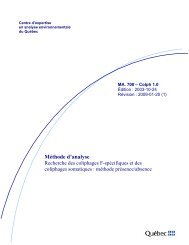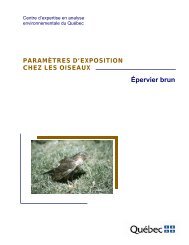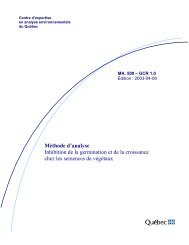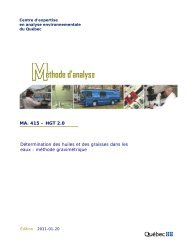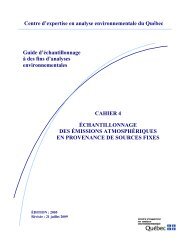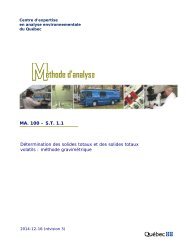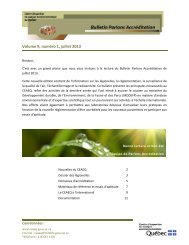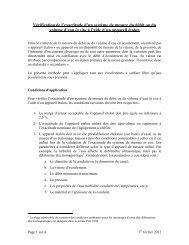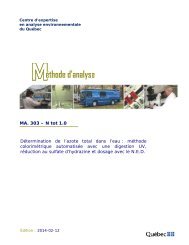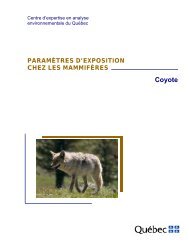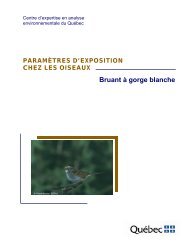Booklet 7 - Flow Measurement Methods in Open Channels
Booklet 7 - Flow Measurement Methods in Open Channels
Booklet 7 - Flow Measurement Methods in Open Channels
You also want an ePaper? Increase the reach of your titles
YUMPU automatically turns print PDFs into web optimized ePapers that Google loves.
−<strong>in</strong>adequate approachthe converg<strong>in</strong>g section of the flume is too short to adequately correct major distortions of theapproach and distribution velocity. The reader can refer to section 2.1.10 which discusses<strong>in</strong>stallation conditions, for an understand<strong>in</strong>g of rules that regulate the approach.−poor measurement technique <strong>in</strong> submerged flow conditionsoften, due to a lack of knowledge, a user is unaware of how to recognize or gauge a channelthat is operat<strong>in</strong>g <strong>in</strong> submerged flow conditions and takes flow measurements at only onelocation, <strong>in</strong>stead of at both measur<strong>in</strong>g po<strong>in</strong>ts, which this situation requires.−obstructions <strong>in</strong> the throat section of the flume2.1.9. Selection criteriait is important to ensure that noth<strong>in</strong>g is block<strong>in</strong>g flow <strong>in</strong> the throat of the flume, particularly <strong>in</strong>the case of small flumes. Where this occurs, liquid is forced to move over the obstacle, which<strong>in</strong>creases the water level at the measur<strong>in</strong>g po<strong>in</strong>t.As <strong>in</strong>dicated <strong>in</strong> section 1.7 of this document, <strong>in</strong>stallation of a Parshall flume is the preferred type of flumewhere the daily flow is 1,800 m 3 and over.Because there are a number of different Parshall flume dimensions available to measure the range ofanticipated flows, other criteria should be considered when select<strong>in</strong>g a flume, such as:−−−−−−discharge: it is important to select the correct size of flume to ensure that free flow conditions are presentat the maximum discharge, and to consider <strong>in</strong>stallation constra<strong>in</strong>ts;loss of head: for any one flow, the degree to which the water level rises, due to <strong>in</strong>troduc<strong>in</strong>g different sizesof flumes;the sensitivity required to detect and measure fluctuations <strong>in</strong> water level, where there are very littlevariations <strong>in</strong> flow;the desired precision;the overall work that is required to <strong>in</strong>stall flumes of different sizes;the costs associated with <strong>in</strong>stallation of flumes of different sizes.2.1.10. Installation detailsThe Parshall flume must be located <strong>in</strong> a straight section of the flow (8) .When <strong>in</strong>stall<strong>in</strong>g a flume, it is important to ensure that none of the flume’s orig<strong>in</strong>al physical features aredamaged (see Table 5).The crest (DR), which is the bottom of the converg<strong>in</strong>g section of the flume, must be higher than the bottom ofthe channel <strong>in</strong> which it is placed. This elevation must be equal to the difference between the water depth <strong>in</strong> thePage 44 of 223<strong>Booklet</strong> 7 - <strong>Flow</strong> <strong>Measurement</strong> <strong>Methods</strong> <strong>in</strong> <strong>Open</strong> <strong>Channels</strong>



